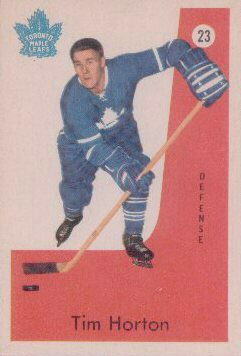 Monday will mark the 37th anniversary of the death of Miles Gilbert “Tim” Horton.
Monday will mark the 37th anniversary of the death of Miles Gilbert “Tim” Horton.
In Canada, Tim Horton needs no introduction. (For everyone else, Horton was a bruising defenceman for the Toronto Maple Leafs in the 1960s and 1970s. He is better known now for his eponymous chain of donut and coffee shops that have transcended even hockey as a national totem.)
Horton died on Feb. 21, 1974 when his car flew off the Queen Elizabeth Way en route to Buffalo, NY, after a game in Toronto.
For years, there had been well-founded speculation that Horton was drunk when he crashed and died. But the police denied it at the time of the accident, and since no one else was injured in the single-vehicle crash, there was never any public inquiry.
However, I found a loophole in Ontario’s Freedom of Information law that allowed me to get a copy of his autopsy. Under Ontario law, the privacy exemption that keeps information like autopsies from public view expires 30 years after the subject’s death. That meant Horton’s file was no longer covered by privacy provisions as of Feb. 21, 2004.
It took more than a year before I finally got the file sent to me via the Archives of Ontario. I wrote a story based on the autopsy in 2005 (Citizen links expire after three months, so this will have to do).
To date, this remains the most interesting document I have ever received through the open-records law.
The detail is clinical and vivid — the description of what Horton was wearing, what was in his car, the grim catalogue of his massive injuries. The pictures show the wrecked Ford Pantera and the responding police officer’s diagram and notes explain how Horton was tossed from the car at high speed.
And, the autopsy reveals, not only was Horton quite drunk — twice the legal limit, the post-mortem blood alcohol test showed — but it also appears he had been taking an amphetamine. He was found with Dexamyl pills on his body.
Dexamyl combined dextroamphetamine with amobarbital, a barbiturate, to take the edge off. It was a popular party drug in the 60s (Andy Warhol popped them) that had also been marketed to harried housewives before it was sensibly outlawed.
Horton was likely taking these to stay competitive in the NHL. He was still playing at age 45 44 and probably felt he needed an edge to keep up with players 20 years younger.
Warning: Some of the medical details in the autopsy may be disturbing to some readers.
(P.S. If you’re a journalist and use this document for a story, please credit me and/or the Ottawa Citizen. It was a huge pain in the ass to get.)
Great read, thanks!
It’s very reassuring to read these forms and see the level of detail of the information regularly collected, even going as far back as 1974, by Ontario’s Office of Chief Coroner. Also gives a bit of an insight into chain of custody and the importance thereof.
By contrast, many U.S. states have politicians for coroners, a dangerous mix of politics and medicine.
“Oedematous” there’s an odd word. Relating to “[o]edema” (filled with fluid). In my first pass through the document I found a word that I would have expected them to use the “oe”, but can’t find it again.
Nice of you to post the report and then set it to “private.” What was the point of that?
Agreed – this is history, let us download it! You obtained a copy via Archives of Ontario, so I’m unsure why you appear to be asserting ownership.
No ownership asserted at all. I just hadn’t set the permission for d/l to public. Try now.
This is awesome. Thanks for the read!